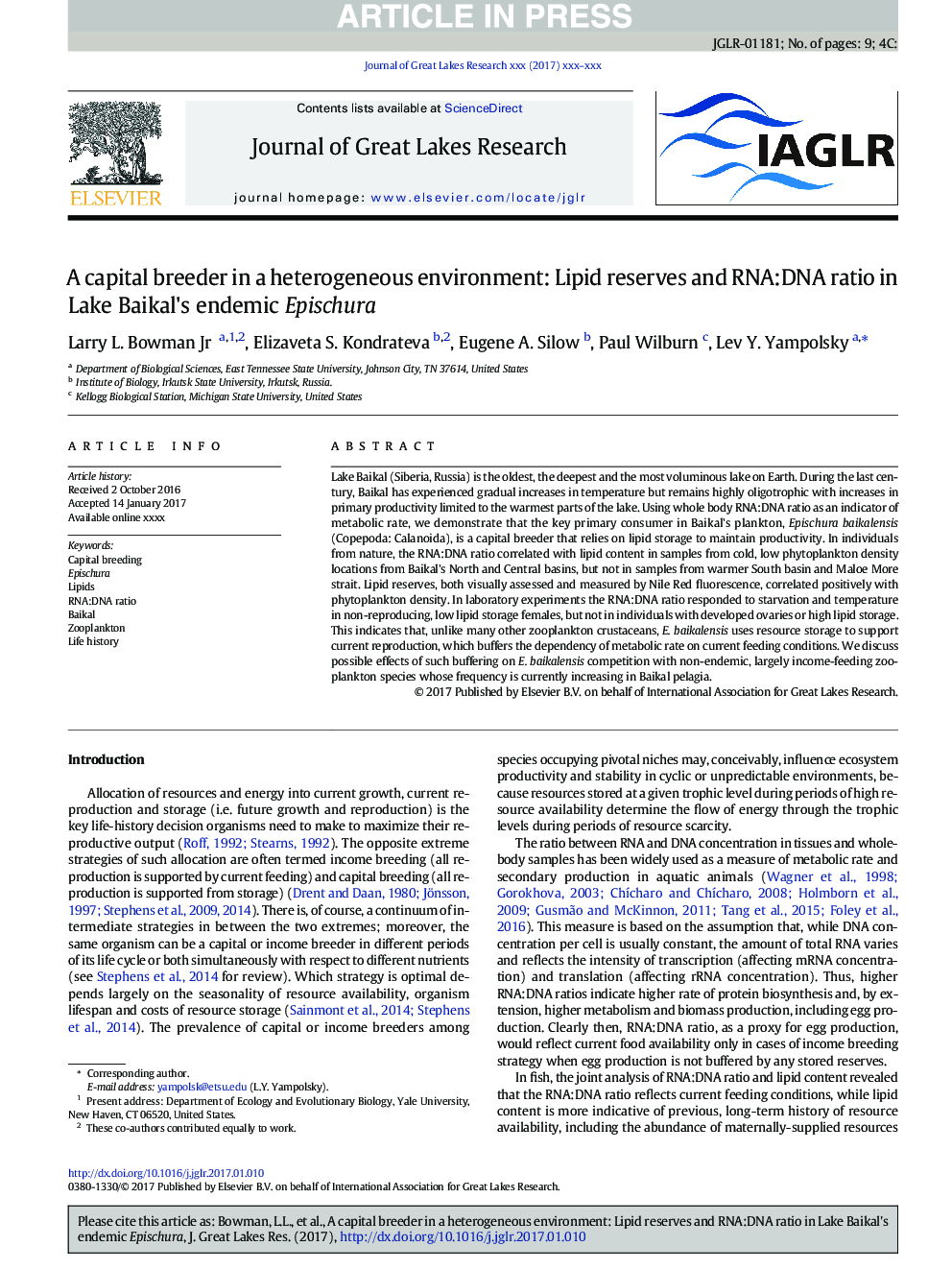| کد مقاله | کد نشریه | سال انتشار | مقاله انگلیسی | نسخه تمام متن |
|---|---|---|---|---|
| 5744725 | 1412366 | 2017 | 9 صفحه PDF | دانلود رایگان |
عنوان انگلیسی مقاله ISI
A capital breeder in a heterogeneous environment: Lipid reserves and RNA:DNA ratio in Lake Baikal's endemic Epischura
دانلود مقاله + سفارش ترجمه
دانلود مقاله ISI انگلیسی
رایگان برای ایرانیان
کلمات کلیدی
موضوعات مرتبط
مهندسی و علوم پایه
علوم زمین و سیارات
علوم زمین و سیاره ای (عمومی)
پیش نمایش صفحه اول مقاله

چکیده انگلیسی
Lake Baikal (Siberia, Russia) is the oldest, the deepest and the most voluminous lake on Earth. During the last century, Baikal has experienced gradual increases in temperature but remains highly oligotrophic with increases in primary productivity limited to the warmest parts of the lake. Using whole body RNA:DNA ratio as an indicator of metabolic rate, we demonstrate that the key primary consumer in Baikal's plankton, Epischura baikalensis (Copepoda: Calanoida), is a capital breeder that relies on lipid storage to maintain productivity. In individuals from nature, the RNA:DNA ratio correlated with lipid content in samples from cold, low phytoplankton density locations from Baikal's North and Central basins, but not in samples from warmer South basin and Maloe More strait. Lipid reserves, both visually assessed and measured by Nile Red fluorescence, correlated positively with phytoplankton density. In laboratory experiments the RNA:DNA ratio responded to starvation and temperature in non-reproducing, low lipid storage females, but not in individuals with developed ovaries or high lipid storage. This indicates that, unlike many other zooplankton crustaceans, E. baikalensis uses resource storage to support current reproduction, which buffers the dependency of metabolic rate on current feeding conditions. We discuss possible effects of such buffering on E. baikalensis competition with non-endemic, largely income-feeding zooplankton species whose frequency is currently increasing in Baikal pelagia.
ناشر
Database: Elsevier - ScienceDirect (ساینس دایرکت)
Journal: Journal of Great Lakes Research - Volume 43, Issue 2, April 2017, Pages 280-288
Journal: Journal of Great Lakes Research - Volume 43, Issue 2, April 2017, Pages 280-288
نویسندگان
Larry L. Jr, Elizaveta S. Kondrateva, Eugene A. Silow, Paul Wilburn, Lev Y. Yampolsky,